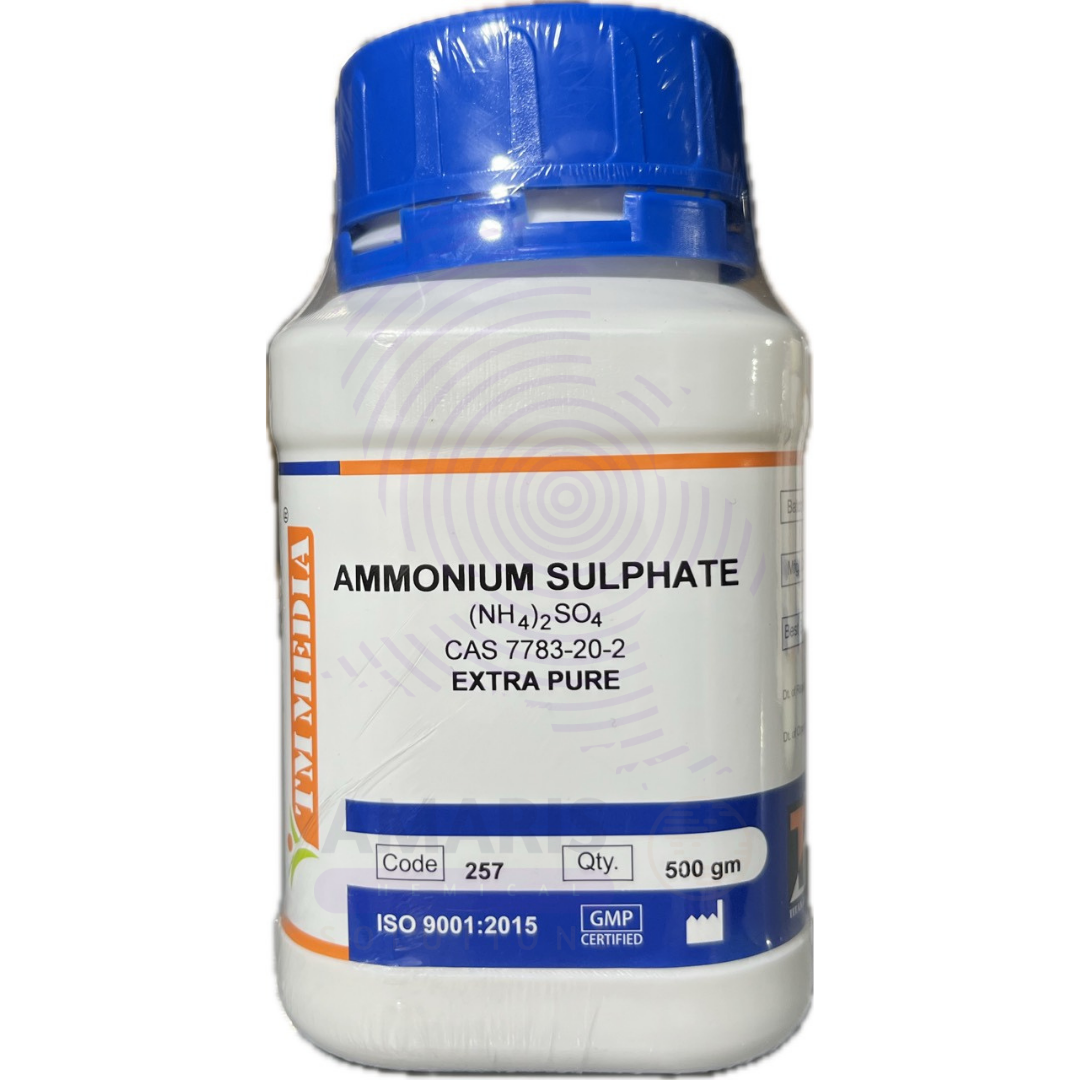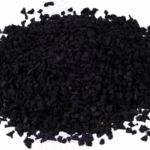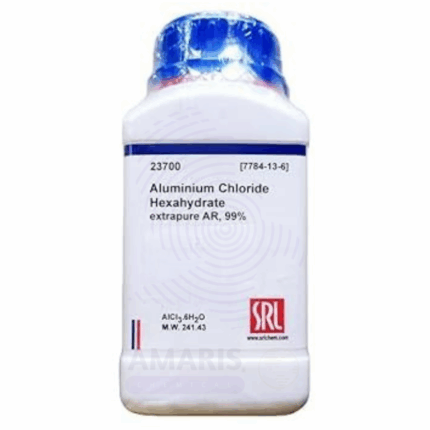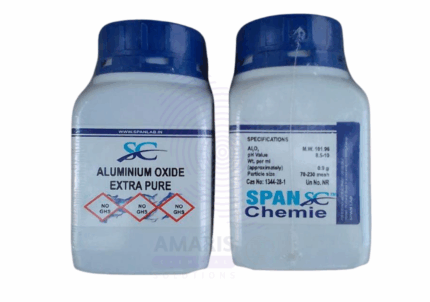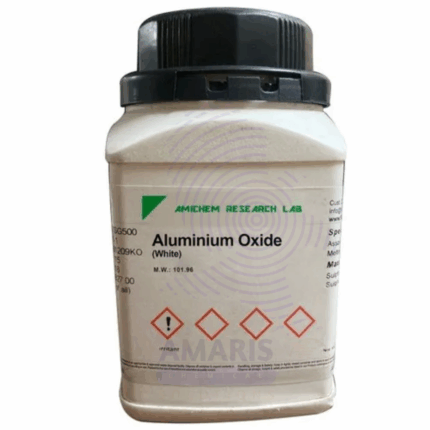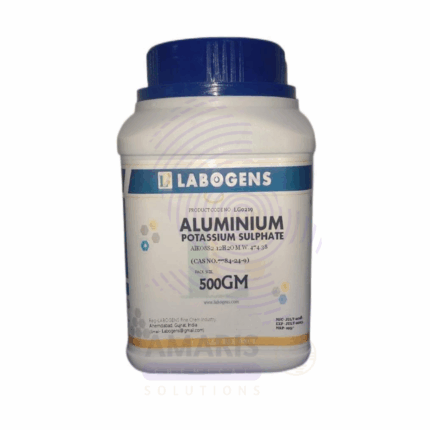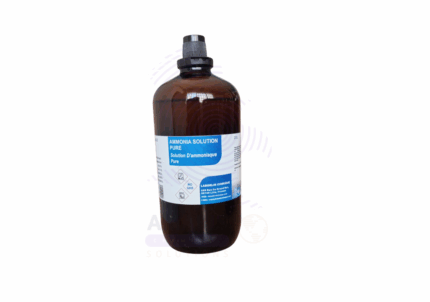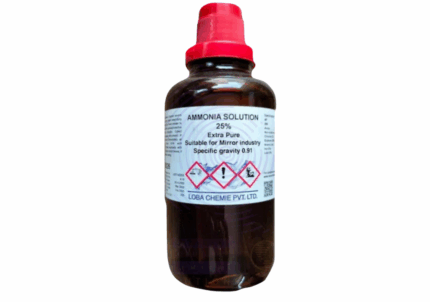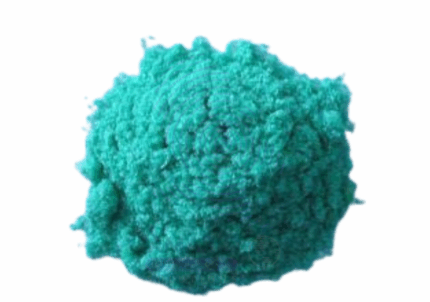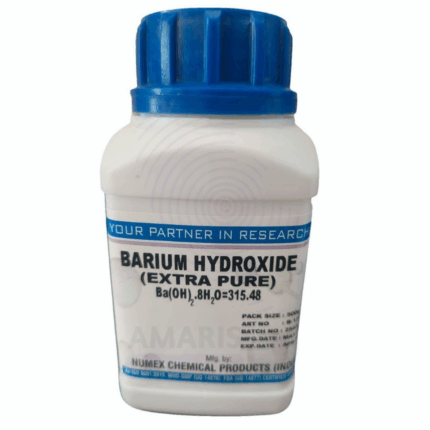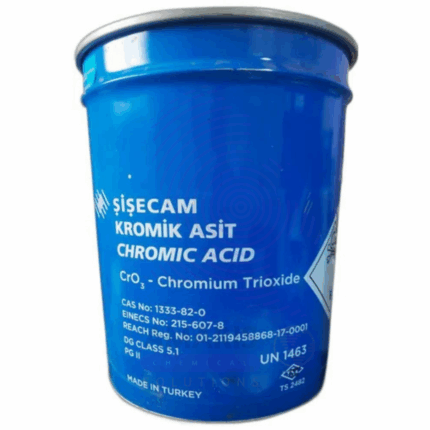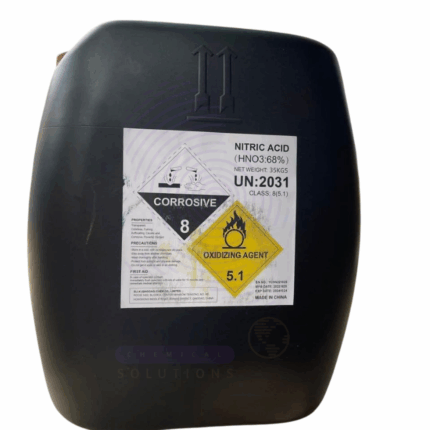Ammonium II Sulphate Extra Pure
$ 18.00 Original price was: $ 18.00.$ 17.89Current price is: $ 17.89.
Ammonium II Sulphate Extra Pure, commonly known as ammonium sulfate ((NH4)2SO4)(\text{(NH}_4)_2\text{SO}_4)((NH4)2SO4), is a high-purity, white crystalline solid widely used in laboratory settings for biochemical, analytical, and inorganic chemistry applications. It is especially valued for protein precipitation and purification through salting-out techniques due to its high solubility and ability to stabilize proteins. Additionally, it serves as a reliable source of nitrogen and sulfate ions in analytical reactions and standard solution preparations. The extra pure grade ensures minimal interference from contaminants, making it ideal for sensitive experimental procedures. It should be stored in a cool, dry place in well-sealed containers to prevent moisture absorption and caking.
Ammonium II Sulphate Extra Pure
Primary Uses
- Protein Precipitation (“Salting Out”)
- Widely used in biochemistry for precipitating and fractionating proteins based on solubility in high-salt solutions.
- Reagent in Analytical Chemistry
- Supplies ammonium and sulfate ions for cation/anion qualitative analysis and precipitation reactions.
- Buffer Component in Biochemical Assays
- Used in some biological buffer systems or to stabilize enzymes and proteins during purification or storage.
- Nutrient in Microbial Culture Media
- Acts as a nitrogen source in minimal media for growing bacteria or fungi under lab conditions.
- pH Adjustment and Ionic Strength Control
- Used to control ionic strength or pH in various chemical solutions or titration systems.
Secondary Uses
- Crystallization of Biomolecules
- Employed in X-ray crystallography and other structural biology techniques to grow protein or enzyme crystals.
- Simulation of Soil or Environmental Chemistry
- Used in lab-scale studies to model nitrogen leaching or sulfate behavior in agricultural or aquatic systems.
- Teaching Reagent for Salt Properties
- Demonstrates solubility, ionic bonding, and thermodynamic behavior in general chemistry education labs.
- Preparation of Ammonium-Based Reagents
- Acts as a precursor for synthesis of other ammonium salts, including lab-made fertilizers or solutions.
- Stabilizer in Enzyme Storage Buffers
- Helps reduce microbial growth and enzymatic degradation when storing proteins long-term.
| PACK SIZE |
500 grams Plastic Tin |
|---|
1. Basic Identification Attributes
- Chemical Name: Ammonium Sulphate
- CAS Number: 7783-20-2
- HS Code: 31022100 (Ammonium sulphate, fertilizer use; other HS codes may apply for lab use)
- Molecular Formula: (NH₄)₂SO₄
- Synonyms:
- Diammonium sulfate
- Ammonium sulfate
- Sulfuric acid diammonium salt
- Mascagnite (natural mineral form)
2. Physical & Chemical Properties
- Physical State: Solid (crystalline powder or granules)
- Color & Odor: White crystals; odorless
- Boiling Point: Decomposes before boiling
- Melting Point: ~235–280°C (decomposes)
- Density/Specific Gravity: ~1.77 g/cm³
- Solubility:
- Water: Highly soluble (~75.4 g/100 mL at 20°C)
- Alcohol: Insoluble
- pH Level: ~5.0–6.0 (in 5% aqueous solution; slightly acidic)
- Vapor Pressure: Negligible
- Flash Point: Not flammable
- Autoignition Temperature: Not applicable
- Viscosity: Not applicable
3. Safety & Hazard Attributes
- Hazard Class (GHS):
- Not classified as hazardous under GHS
- May cause mild eye or respiratory irritation if dust is inhaled
- NFPA Ratings:
- Health: 1
- Flammability: 0
- Reactivity: 0
- Exposure Limits:
- No established OSHA/ACGIH limits
- General nuisance dust limits apply (10 mg/m³ total dust)
- Reactivity:
- Stable under standard conditions
- Incompatible with strong bases and oxidizers
4. Storage & Handling Attributes
- Storage Conditions:
- Store in a cool, dry, tightly sealed container
- Protect from moisture (hygroscopic)
- Incompatible Materials:
- Strong alkalis, nitrates, and oxidizing agents
- Container Type:
- Plastic or glass containers with tight-fitting lids
- Shelf Life & Expiration Date:
- ~3–5 years under dry storage conditions
- Special Handling Requirements:
- Use gloves, lab coat, and eye protection
- Minimize dust generation during handling
5. Regulatory & Compliance Attributes
- Regulatory Status:
- Listed under TSCA, REACH
- Commonly used in labs and approved in food/pharma grades (with different purity standards)
- Hazard Symbols (GHS Pictograms):
- Not required for this compound
- Transportation Restrictions:
- Not classified as a hazardous material for shipping
- Waste Disposal Method:
- Dilute with water; dispose through standard chemical waste systems
- Avoid release into drains in large quantities
6. Environmental & Health Impact
- Ecotoxicity:
- Can contribute to eutrophication in aquatic systems in large quantities
- Low acute toxicity to aquatic organisms
- Persistence in Environment:
- Dissociates into ammonium and sulfate ions, which are naturally occurring
- Carcinogenicity/Mutagenicity:
- Not classified as carcinogenic or mutagenic
- Biodegradability:
- Inorganic salt; not biodegradable but environmentally manageable
SAFETY PRECAUTIONS
- Personal Protective Equipment (PPE):
- Wear a lab coat, chemical-resistant gloves (e.g., nitrile), and safety goggles.
- Use a dust mask or operate in a fume hood if handling fine powder.
- Handling:
- Handle in a well-ventilated area.
- Avoid inhalation of dust and contact with skin or eyes.
- Do not mix with strong oxidizers or alkalis.
- Minimize dust generation; clean up spills promptly.
- Storage:
- Store in a cool, dry, well-ventilated area in a tightly closed container.
- Protect from moisture—hygroscopic and may clump when exposed to air.
- Keep away from incompatible materials such as strong bases and oxidizers.
- Hygiene Measures:
- Wash hands and exposed areas thoroughly after handling.
- Do not eat, drink, or smoke in the lab.
- Decontaminate work surfaces after use.
FIRST AID MEASURES
- Inhalation:
- Move person to fresh air.
- If breathing is difficult, administer oxygen and seek medical attention.
- Irritation to the respiratory tract is possible with dust exposure.
- Skin Contact:
- Wash thoroughly with soap and water.
- Remove any contaminated clothing.
- Seek medical attention if irritation or rash develops.
- Eye Contact:
- Rinse cautiously with water for at least 15 minutes.
- Keep eyelids open and remove contact lenses if present.
- Seek medical attention if irritation persists.
- Ingestion:
- Rinse mouth thoroughly with water.
- Do not induce vomiting.
- If conscious, give water to dilute and seek immediate medical advice.
- High ingestion may cause gastrointestinal irritation or ammonia toxicity in rare cases.
FIRE FIGHTING MEASURES
- Suitable Extinguishing Media:
- Use dry chemical, CO₂, foam, or water spray depending on the surrounding materials.
- Specific Hazards:
- Not flammable, but at high temperatures may decompose, releasing:
- Ammonia
- Nitrogen oxides (NOₓ)
- Sulfur oxides (SOₓ)
- Not flammable, but at high temperatures may decompose, releasing:
- Protective Equipment for Firefighters:
- Wear self-contained breathing apparatus (SCBA) and full protective gear.
- Firefighting Instructions:
- Cool containers with water spray to avoid rupture from thermal decomposition.
- Avoid breathing decomposition vapors.
- Prevent runoff from entering drains or watercourses—can be harmful to aquatic life.


 Preservatives(food)
Preservatives(food) Flavor Enhancers
Flavor Enhancers Acidulants
Acidulants Sweeteners
Sweeteners Antioxidants
Antioxidants Colorants(food)
Colorants(food) Nutraceutical Ingredients (food)
Nutraceutical Ingredients (food) Nutrient Supplements
Nutrient Supplements Emulsifiers
Emulsifiers
 Collectors
Collectors Dust Suppressants
Dust Suppressants Explosives and Blasting Agents
Explosives and Blasting Agents Flocculants and Coagulants
Flocculants and Coagulants Frothers
Frothers Leaching Agents
Leaching Agents pH Modifiers
pH Modifiers Precious Metal Extraction Agents
Precious Metal Extraction Agents
 Antioxidants(plastic)
Antioxidants(plastic) Colorants (Pigments, Dyes)
Colorants (Pigments, Dyes) Fillers and Reinforcements
Fillers and Reinforcements Flame Retardants
Flame Retardants Monomers
Monomers Plasticizers
Plasticizers Polymerization Initiators
Polymerization Initiators Stabilizers (UV, Heat)
Stabilizers (UV, Heat)
 Antifoaming Agents
Antifoaming Agents Chelating Agents
Chelating Agents Coagulants and Flocculants
Coagulants and Flocculants Corrosion Inhibitors
Corrosion Inhibitors Disinfectants and Biocides
Disinfectants and Biocides Oxidizing Agents
Oxidizing Agents pH Adjusters
pH Adjusters Scale Inhibitors( water)
Scale Inhibitors( water)
 Antioxidants(cosmetic)
Antioxidants(cosmetic) Emollients
Emollients Fragrances and Essential Oils
Fragrances and Essential Oils Humectants
Humectants Preservatives
Preservatives Surfactants(cosmetic)
Surfactants(cosmetic) Thickeners
Thickeners UV Filters
UV Filters
 Fertilizers
Fertilizers Soil Conditioners
Soil Conditioners Plant Growth Regulators
Plant Growth Regulators Animal Feed Additives
Animal Feed Additives Biostimulants
Biostimulants Pesticides (Herbicides, Insecticides, Fungicides)
Pesticides (Herbicides, Insecticides, Fungicides)
 Active Pharmaceutical Ingredients (APIs)
Active Pharmaceutical Ingredients (APIs) Excipients
Excipients Solvents(pharmaceutical)
Solvents(pharmaceutical) Antibiotics
Antibiotics Antiseptics and Disinfectants
Antiseptics and Disinfectants Vaccine Adjuvants
Vaccine Adjuvants Nutraceutical Ingredients (pharmaceutical)
Nutraceutical Ingredients (pharmaceutical) Analgesics & Antipyretics
Analgesics & Antipyretics
 Analytical Reagents
Analytical Reagents Solvents(lab)
Solvents(lab) Chromatography Chemicals
Chromatography Chemicals Spectroscopy Reagents
Spectroscopy Reagents microbiology-and-cell-culture-reagents
microbiology-and-cell-culture-reagents Molecular Biology Reagents
Molecular Biology Reagents Biochemical Reagents
Biochemical Reagents Inorganic and Organic Standards
Inorganic and Organic Standards Laboratory Safety Chemicals
Laboratory Safety Chemicals Specialty Laboratory Chemicals(Special Laboratory Equipment)
Specialty Laboratory Chemicals(Special Laboratory Equipment)
 Demulsifiers
Demulsifiers Hydraulic Fracturing Fluids
Hydraulic Fracturing Fluids Scale Inhibitors(oil)
Scale Inhibitors(oil) Surfactants(oil)
Surfactants(oil) Drilling Fluids
Drilling Fluids
 Dyes and Pigments
Dyes and Pigments Bleaching Agents
Bleaching Agents Softening Agents
Softening Agents Finishing Agents
Finishing Agents Antistatic Agents
Antistatic Agents
 Admixtures
Admixtures Waterproofing Agents
Waterproofing Agents Sealants and Adhesives
Sealants and Adhesives Curing Compounds
Curing Compounds Concrete Repair Chemicals
Concrete Repair Chemicals Anti-Corrosion Coatings
Anti-Corrosion Coatings
 Surfactants(cleaning)
Surfactants(cleaning) Builders
Builders Enzymes
Enzymes Solvents (Cleaning)
Solvents (Cleaning) Fragrances
Fragrances
 Electronic Chemicals
Electronic Chemicals Catalysts
Catalysts Lubricants
Lubricants Photographic Chemicals
Photographic Chemicals Refrigerants
Refrigerants Automotive chemicals
Automotive chemicals Pyrotechnic Chemicals
Pyrotechnic Chemicals
 Biodegradable Surfactants
Biodegradable Surfactants Bio-based Solvents
Bio-based Solvents Renewable Polymers
Renewable Polymers Carbon Capture Chemicals
Carbon Capture Chemicals Wastewater Treatment Chemicals
Wastewater Treatment Chemicals
 Pigments
Pigments Solvents(paint)
Solvents(paint) Specialty Coatings
Specialty Coatings Binders/Resins
Binders/Resins Additives
Additives Driers
Driers Anti-Corrosion Agents
Anti-Corrosion Agents Functional Coatings
Functional Coatings Application-Specific Coatings
Application-Specific Coatings
 Fresh Herbs
Fresh Herbs Ground Spices
Ground Spices Whole Spices
Whole Spices Spice Blends
Spice Blends Dried Herbs
Dried Herbs
 Leavening Agents
Leavening Agents Dough Conditioners
Dough Conditioners Flour Treatments
Flour Treatments Fat Replacers
Fat Replacers Decoratives
Decoratives Preservatives(baking)
Preservatives(baking)
 Plasticizers & Softeners
Plasticizers & Softeners Reinforcing Agents
Reinforcing Agents Adhesion Promoters
Adhesion Promoters Vulcanizing Agents
Vulcanizing Agents Antidegradants
Antidegradants Blowing Agents
Blowing Agents Fillers & Extenders
Fillers & Extenders Accelerators & Retarders
Accelerators & Retarders